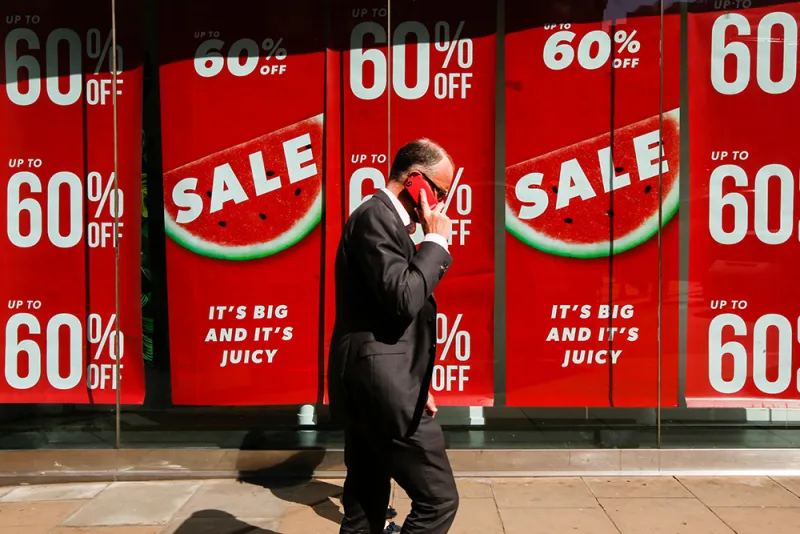Credit fund managers generally agree that the current cycle is in its later stages — but when it will turn is anyone’s guess.
So where does that leave distressed fund managers, who have been patiently waiting for more than a decade for the next big wave of defaults?
Activity may have picked up over the past few weeks, as some high-yield bonds of companies in the retail and satellite communications sectors have sold off dramatically based on isolated events.
But Steven Oh, head of global credit and fixed income at $97 billion asset manager PineBridge Investments, doesn’t think this means that distressed fund managers are finally going to suddenly see a glut of opportunities. “In the last five years, there’s been a lot of fundraising by distressed fund managers with the idea that next distressed cycle” is imminent, he said, noting that this has yet to pan out. “There are time periods when there are distressed opportunities, and time periods where distressed is unattractive. Any distressed manager will say that in any time period, they can find idiosyncratic opportunities. I’m not sure I buy into that. My perspective on distressed is that you have to go into it and then get out of it.”
Typically, distressed cycles follow broader cyclical moves, such as an economic downturn, or industry-wide slumps. At the moment, Oh said, “You don’t have a recessionary economic downturn. What you do have is a slowing U.S. and global economy, but we are far from any type of recessionary scenario. And we are in a very low default environment.”
In the last three years, the number of new bonds with CCC credit ratings — the rating at which bonds fall into distressed territory — has gone down fairly significantly, Oh added.
As a result, he said, distressed opportunities today tend to be the result of idiosyncratic business problems, or clustered in the retail or energy sectors. “That said, the past three months have presented an increase in the opportunity set that falls within the distressed purview,” Oh said.
[II Deep Dive: Don’t Try to Raise a Distressed Debt Fund Right Now]
Ivelina Green, head of special situations at London-based hedge fund firm CQS, said she’s loath to identify what catalyst might spark the next wave of defaults, but she notes that leverage levels are rising, as are so-called covenant-lite loans, which offer lenders fewer protections.
“These indicators don’t signal distress, but they signal excess in terms of lending standards and the credit market, which precedes distress,” she said. CQS managed nearly $19 billion at the end of October.
In the meantime, according to Green, there’s plenty to do. Green’s team invests in a wide variety of sectors and geographies — which she said presents interesting relative value opportunities — and typically invests for three to five years. “Sectors and geographies can present opportunities, but it’s idiosyncratic companies within those sectors and geographies that provide value,” she said. “You need to find that one company that has a reason to exist but needs to be bridged in terms of liquidity to exist.”
She pointed out that retail has come under pressure globally, but she has found more compelling opportunities in the UK than the U.S. One such play that has worked out well for CQS is a company called New Look, a clothing retailer in the UK that Green said made operational mistakes. This is one of Green’s favorite types of distressed investments.
“It is very difficult when you’re looking at a retailer to say, ‘It’s a declining business, but the rate of decline is going to be two or three percent a year, so we can model it out on that basis, and the ultimate recovery is going to be XYZ, and I’m buying it cheap for that,’” she said. “That decline rate can be significantly steeper than you predicted.”
Identifying things that can be fixed for operational excellence — as opposed to underwriting a structurally declining company without a vision — is a safer course of action, Green said.
Green acknowledged that investing in distressed debt late in a credit cycle can be tricky, knowing that one will be holding onto such assets through a recession. With that in mind, she looks for three types of investments. One is event-driven investments that culminate in M&A transactions. Another is idiosyncratic opportunities that offer attractive restructuring opportunities regardless of what stage the credit cycle is in.
Lastly, she looks for companies that she can buy cheaply that are still throwing off cash. She cited some idiosyncratic oil and gas investments as an example.
“If you can find an asset that’s cash flow positive and in operation for the next couple of years so that effectively you are yielding cash to a hard asset while waiting for recovery to kick in — if you can find that and you can buy it cheap enough, that is something you should invest in,” she said.






